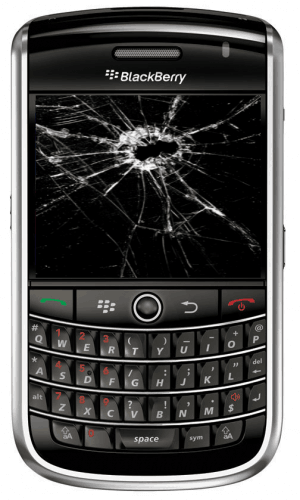The Right Direction at the right time will change the way of life.
Ask me!
Search products
Tuesday, 10 July 2018
Treat customer as guest - Follow the G.U.E.S.T method.
G.U.E.S.T
• GREETING
• UNDERSTANDING
• EXPLAINING THE PRODUCT
• SELLING
• THANKING
11 Ways to Tell Your Customer No
Reasons why good customer service will increase your business and bad customer service can put you out
What is Customer Service?
"Customer service is the sum total of what an organisation does to meet customer expectations and produce customer satisfaction".
Retail - Sales & Management - Day 17
Customer Service & telephone Etiquette:
1) Bad Customer Service | Mr. Bean Official Cartoon
2) No Soup for you
3) Non Empathetic customer service and carefree attitude
4) Bad Customer Service - Soup shop
5) Customer Service Skills: How to Deal with a Difficult Customer:
6) 5 Action Ideas to Deal With Difficult Customers
7) Dealing With Angry Customers
8) The guest at the gas station bad customer service
Telephone Etiquette:
vadivelu Phone comedy
Koundamani Phone comedy - Suriyan
Monday, 9 July 2018
If you are not being updated with technology then you are out of business.
Let's look at history where technology has wiped off few business from the face of the earth.

Case Study on Business Strategies: Kodak’s Transition to Digital

- Kodak’s Digital and Film Imaging Systems section produces digital and traditional film cameras for consumers, professional photographers, and the entertainment industry.
- Health Imaging caters to the health care market by creating health imaging products such as medical films, chemicals, and processing equipment.
- The Commercial Imaging group produces aerial, industrial, graphic, and micrographic films, inkjet printers, scanners, and digital printing equipment to target commercial and industrial printing, banking, and insurance markets.
- Will the company’s current strengths and capabilities to make Kodak as ‘The Picture Company”?
- How serious are the weakness and competitive deficiencies?
- Does the company have attractive market opportunities that are well suited with Kodak’s resources? Does it have the internal resources to continue spending money investing in new technology?
- What type of strategy should it use to enter the digital camera business and how will Kodak leverage its strategic resources?
- Should it continue to research and produce digital camera technology alone, or look for partners?
- How will it cope with their existing and new competitors and how will it build a strategic advantage over other companies? Can Kodak once again dominate the world market?

- Will the company’s current strengths and capabilities to make Kodak as ‘The Picture Company”?
- How serious are the weakness and competitive deficiencies?
- Does the company have attractive market opportunities that are well suited with Kodak’s resources? Does it have the internal resources to continue spending money investing in new technology?
- What type of strategy should it use to enter the digital camera business and how will Kodak leverage its strategic resources?
- Should it continue to research and produce digital camera technology alone, or look for partners?
- How will it cope with their existing and new competitors and how will it build a strategic advantage over other companies? Can Kodak once again dominate the world market?
- Valuable intangible assets: Kodak’s strengths were its brand equity and distribution presence. After almost a century of global leadership in the photographic industry, Kodak possessed brand recognition and worldwide distribution. Kodak could bring new products to consumers’ attention and to support these products with one of the world’s best known and most widely respected brand names as a huge advantage in the market where technological change created uncertainty for consumers. Kodak’s brand reputation was supported by its massive. , worldwide distribution presence – primarily through retail photography stores, film processors, and professional photographers.
- Competitive Capabilities: Prior to 1990s Kodak had invested huge in R&D. Moreover, its century of innovation and development of photographic images gave Kodak tremendous depth of understanding of recording and processing images. Central to Kodak’s imaging capability was its color management capability. In the digitizing color and transferring digital images to paper, Kodak possessed a powerful set of complementary technologies in sensing, color management and thermal printing.
- Market advantage: Through its wider distribution network, it has been able to maintain a huge market coverage and accessibility. It had worldwide distribution presence – primarily through retail photography stores, film processors, and professional photographers.
- Competency: Eastman Kodak has been Leveraging competencies in film and paper media, color management. It has been known for the best quality films and cameras worldwide. Its journey of more than 100 years has helped to gain the experience and excel in its Endeavour. The organizational changes like decentralization and accountability that George Fisher made helped increase speed of manufacturing and product development .i.e short product development cycles. Secondly, a strength could be also considered Kodak’s favorable corporate image (and implicitly a significant brand equity) that results from the values which are said to lead the staff’s behaviors (“respect for the dignity of the individual, integrity, trust, credibility, continuous improvement and personal renewal, recognition and celebration”), a transparent management which allows shareholders to have a realistic and up-to-date image of the operations performed, strong Human Resources policies and commitment to the community.
- Core Competency: Eastman Kodak was a highly integrated company that did its own R&D and manufactured its own parts. Changing global markets and cost pressures in the 1980s and 1990s threatened the way of doing business. So the knowledge, company’s intellectual capital are also affected and repercussion is proficiency in its core competency started diminish. George Fisher, CEO in 1993, refocused the company on core competencies and joined the trend of outsourcing with close relationships to suppliers and announced a new explicit social contract as part of the restructuring effort. By 1997, the company could not grow out of its competitiveness problems like major price competition from its biggest international competitor, Fuji, which was engaged in a major price-cutting campaign aimed at increasing its market share internationally and particularly in U.S. markets. In response, Kodak made more significant changes designed to reduce its costs and to recapture market share in the company’s core products. But all these attempts only lead to decrease market share and declining profit.
- Distinctive Competency: Firstly, the brand image of the company that has been built since century is the distinctive competency for Kodak. Before the digital age, its distinctive competencies were film and Cameras and its sister concern for its chemical technology.
- Vertical integration combined with continuous innovation and product development. Speed is also required cutting cycle times in manufacturing and product development.
- To systematize and accelerate product development and improve product-launch, quality, Kodak introduced a new product development methodology called “Manufacturing Assurance Process”(MAP).
- Joint venture with HP, Microsoft to introduce new products that required in the market. Collaborate with expert to enhance the competency.
- Digital strategy was to create greater coherence among Kodak’s multiple digital projects.
- Previously they had diversification strategy but later Fisher focus in Imaging business.
STRUGGLING WITH DISRUPTIVE CHANGE – RIM
STRUGGLING WITH DISRUPTIVE CHANGE – NOKIA
STRUGGLING WITH DISRUPTIVE CHANGE – MICROSOFT
They used to point their finger at IBM and laugh – Now they’ve become the thing they despised – Bill Hill, a former Microsoft manager


Retail - Sales & Management - Day 16
Technology beckons tips to grow rich and sustain.
July 2018, this is the first time that the three wealthiest people on the ranking made their fortunes from technology, further solidifying the sector's USP as the most robust creator of wealth. In fact, technology fortunes make up about a fifth of the more than $5 trillion in wealth tracked by the Bloomberg index, more than any other sector.
Customer Service
http://www.youtube.com/watch?v=RskfYxj0n88
http://www.youtube.com/watch?v=uVqBzP0xdKk
http://www.youtube.com/watch?v=54xYxV1SoaU
http://www.youtube.com/watch?v=8X-Ksqn_T_c
http://www.youtube.com/watch?v=WuHHC4tpXt0
http://www.youtube.com/watch?v=ybCxN86n61k
Abilene Paradox - Was there a conflict in the first place?
What is The Abilene Paradox ?
On a birthday, a family decided to go out for dinner. Husband asked wife, where to go?
Thinking that he likes Gujarati food, she said: “Let’s go to Agashiye - The Terrace Restaurant!”
His son and daughter nodded in agreement.
Use all your available resources
What a beautiful message...!
A young girl and her father were walking along a forest path.
At some point, they came across a large tree branch on the ground in front of them.
The girl asked her father, “If I try, do you think I could move that branch?”
Her father replied, “I am sure you can, if you use all your strength.”
The girl tried her best to lift or push the branch, but she was not strong enough and she couldn't move it.
She said, with disappointment, “You were wrong, dad. I can't move it.”
“Try again with all your strength,” replied her father.
Again, the girl tried hard to push the branch. She struggled but it did not move.
“Dad, I cannot do it,” said the girl.
Finally her father said, “Young lady, I advised you to use 'all your strength'. You didn’t ask for my help.
~~~
*_Moral :_*
*Our real strength lies not in independence, but in interdependence.*
*No individual person has all the strengths, all the resources and all the stamina required for the complete blossoming of their vision.*
*To ask for help and support when we need it is not a sign of weakness, it is a sign of wisdom.*
Pencil Pathway
A boy was watching his grandmother write a letter. At one point he asked: ‘Are you writing a story about what we’ve done? Is it a story about me?’
His grandmother stopped writing her letter and said to her grandson:
I am writing about you,... actually, but more important than the words is the pencil I’m using. I hope you will be like this pencil when you grow up.’
Intrigued, the boy looked at the pencil. It didn’t seem very special.
‘But it’s just like any other pencil I’ve ever seen!’
‘That depends on how you look at things. It has five qualities which, if you manage to hang on them, will make you a person who is always at peace with the world.’
_‘First quality: you are capable of great things, but you must never forget that there is a hand guiding your steps. We call that hand God, and He always guides us according to His will.’_
_"Second quality: now and then, I have to stop writing and use a sharpener. That makes the pencil suffer a little, but afterwards, he’s much sharper. So you, too, must learn to bear certain pains and sorrows, because they will make you a better person._
_"Third quality: the pencil always allows us to use an eraser to rub out any mistakes. This means that correcting something we did is not necessarily a bad thing; it helps to keep us on the road to justice.’_
_‘Fourth quality: what really matters in a pencil is not its wooden exterior, but the graphite inside. So always pay attention to what is happening inside you.’_
_"Finally, the pencil’s fifth quality: it always leaves a mark. in just the same way, you should know that everything you do in life will leave a mark, so try to be conscious of that in your every action’. --- Happy Living
Saturday, 7 July 2018
Save Time and Link Your Social Accounts Together, Including Google+!
https://www.linkedin.com/pulse/20140828142839-35499870-save-time-and-link-your-social-accounts-together-including-google
Retail - Sales & Management - Day 15
Friday, 6 July 2018
Number Game
“You’re seeing all the numbers from 1 to 15
with the exception of 4 and 9.
- To decide why the numbers are arranged in this sequence,
- Then put the missing numbers in their proper places.”













